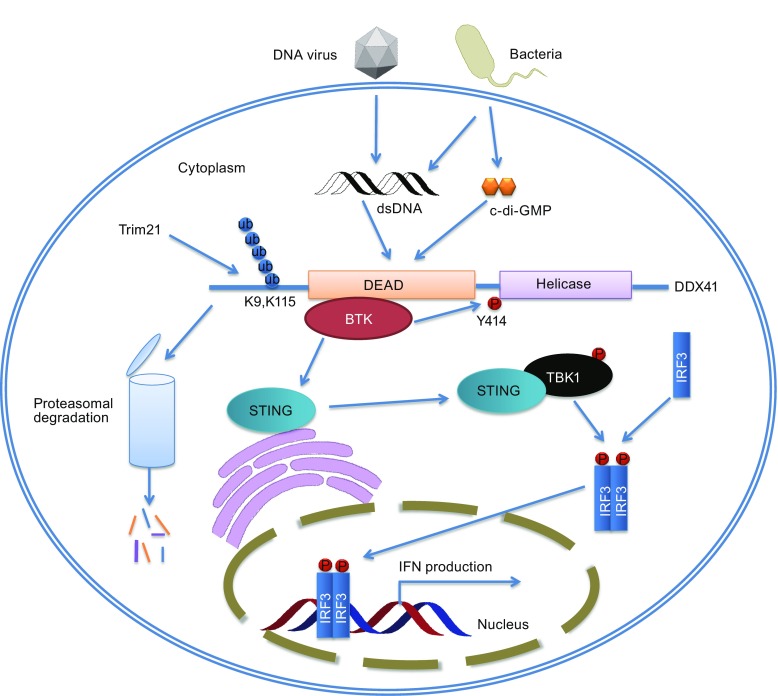Figure 1.

The signaling pathway of DDX41 in innate immunity. After infection, virus and bacteria release dsDNA or c-di-GMP to cells. DDX41 is then phosphorylated by BTK kinase at Y414 site and activated. The activated DDX41 can detect foreign PAMPs with DEAD domain, and then activate STING. Activated STING translocates from the endoplasmic reticulum (ER) to Golgi apparatus and interacts with TBK1 (Ouyang et al., 2012). The STING-TBK1 complex is required for the activation of TBK1 and the subsequent phosphorylation and nuclear translocation of IRF3, ultimately leading to expression of type I interferons. After immune response, DDX41 is ubiquitinated by Trim 21 at Lys9 and Lys115 sites, leading to degradation in proteasome
